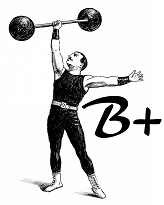Andrew Semans’ “Resurrection” is a special Sundance surprise! It’s a psychological thriller that touches on a woman’s damaged individuality and empathy intertwined with motherhood; it has a bit of Andrzej Żuławski’s “Possession” mixed with the disorientation of “The Vanishing.” And Rebecca Hall? Better than ever before.
Sundance is that type of festival that fills their slate with films by directors you don’t know much about. Since you don’t know much about them, you have no expectations (cold basically). That is what happened with Andrew Semans’ “Resurrection.” I knew little to nothing about Semans and his work; I just knew that the promo still for his new film was a picture of Rebecca Hall. With only that picture, I was excited to see it. Who doesn’t love Rebecca Hall? It’s always a blessing having Hall attached to a work that premieres on Sundance (“The Night House,” “Passing“). And then things get better when you see Tim Roth is also in the cast and that it’s a thriller. My excitement was off the roof; but I was still skeptical about what it might be about since the plot synopsis didn’t say much.
A Plot that Travels Through Wavelengths to Distort Reality
Margaret (Rebecca Hall) is very successful, and her life is entirely in order. She perfectly balances the various demanding jobs that her career has and parenthood while single by taking care of her independent daughter, Abbie (Grace Kaufman). However, things start to swindle when she starts encountering a mysterious and unwelcomed figure from her past: David (Tim Roth), her abusive ex. Margaret’s life takes a considerable toll psychologically, physically, and in the relationship with her daughter because of his return.
That’s the clearest the plot will get, as the rest of the film travels through a wavelength that distorts reality. Psyches are getting damaged, memories fractured, and in between all that, Margaret is trying to keep her daughter safe from all this ruckus. In the beginning, David is a mysterious figure; each appearance causes us to question the purpose of his visits and what connection he has with Margaret. The connection between them is one you don’t expect, and its resolution will leave your jaw on the floor due to how brilliant it is.
Semans Pulls Inspiration from the Right Places, Yet Makes His Own Unique Work
“Resurrection” is a weird (very) picture, one that a lot of audiences will most likely stray away from, unfortunately, due to the film’s complex and puzzling approach to gaslighting, motherhood, and empathy. Nevertheless, I advise those people to take a chance on this movie. It is one of those films where the more times you see it, the more you get from it. With each viewing, you get a couple of pieces from the puzzle until you get the whole picture. It’s definitely a film that will garner a couple of analyses and essays apropos its symbolism, imagery, and concepts once it formally releases.
[‘Resurrection’] is one of those films where the more times you see it, the more you get from it.”
These topics have been explored in horror many times, and it’s fascinating how different each of them is and from what sub-genre it is coming from. For example, the motif’s treatment of “Rosemary’s Baby” isn’t the same as that of “A Tale of Two Sisters,” “Diabolique,” or “Rebecca.” Semans decided that his approach would come from a more surrealistic manner so he could get more creative with the delivery.
He is a director who knows what he’s doing and what films he should consider as inspiration. Some elements are similar to Andrzej Żuławski’s work, predominantly his cult classic masterpiece “Possession” (1981) and “The Public Woman” (1984). Many directors are galvanized by Żuławski, with many trying to do their own rendition of the classic Isabelle Adjani tunnel scene (which is one of the best sequences in horror history).
Great Performances, with Rebecca Hall at her Best
Still, Semans isn’t interested in doing that in this picture. Instead, he wants to take the incommodity, resistance, and allegory of the Polish director’s work. It also contains a reverse disorientation effect that Sluizer’s “The Vanishing” has. That recondite sense of losing someone dear to you is changed to the impact of having someone come back from the grave (if you could call it that), yet with some similar repercussions. In between those details, there are minor references to other “provocative” works, like Paul Morrissey’s “Flesh for Frankenstein” (with a scene that would make Udo Kier’s Baron proud), David Cronenberg’s “Crash,” Aronofsky’s “Mother!,” and Brunello Rondi’s “The Demon.”
In addition to a great concept, there are incredible performances. First off, Rebecca Hall.. wow! She doesn’t skip a beat and does some of the best work of her career in these past few years. In “Resurrection,” she rips the screen in half and chews every bit of the scenery with excellence, making an almost 10-minute single-take heart-aching monologue look like child’s play.
[Seamans] is a director who knows what he’s doing and what films he should consider as inspiration.”
One Word for ‘Resurrection’—a Sundance ‘Wonder’
The weirder the film gets, the stronger her performance is. On the other hand, Tim Roth is slimy and bone-chilling as usual. Without expressing much, he says a lot; he plays a role that you just want the main characters to do the worst to them. There’s also a great score from Jim Williams (“Raw,” “Possessor,” “Titane”), which was a match made in heaven for him to take this job after Ducournau’s latest, and great cinematography from Wyatt Garfield (“Nine Days,” “Diane”).
Again, it might take a few runs to fully comprehend this film (I have seen it twice now, and I still think I am missing a couple of things), but it’s genuinely worth it. It’s a fascinating sophomore feature for Andrew Seamans, a showcase for Rebecca Hall’s talent, and a Sundance wonder.

This review was written from day 4 of Sundance Film Festival’s 2022 programming.
Support the Site: Consider becoming a sponsor to unlock exclusive, member-only content and help support The Movie Buff!


